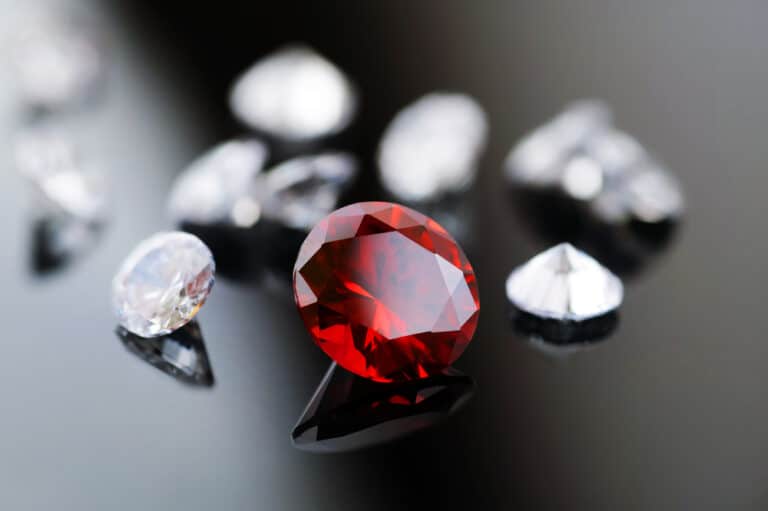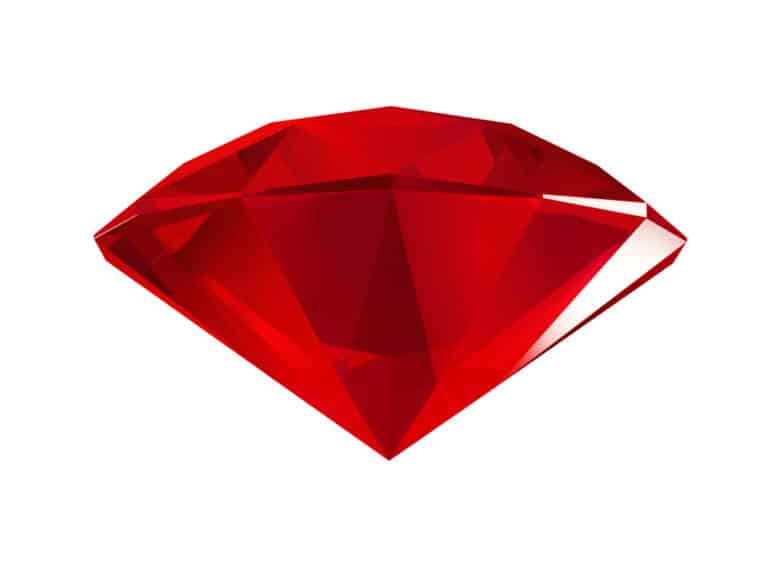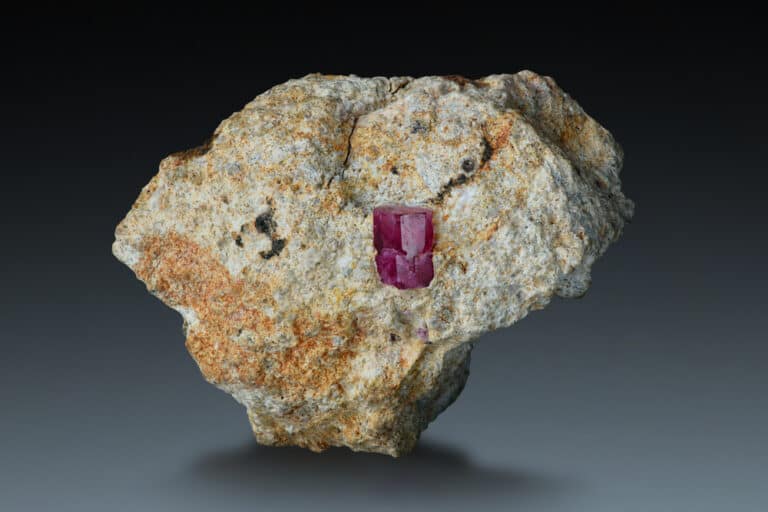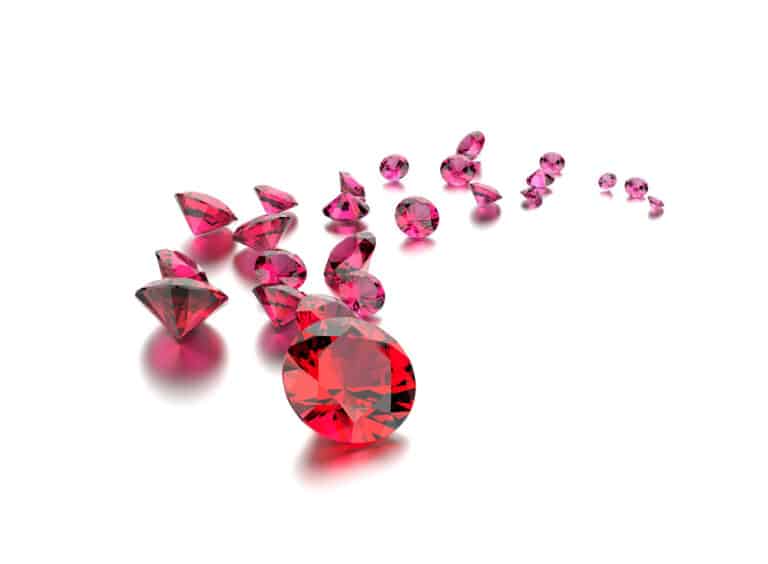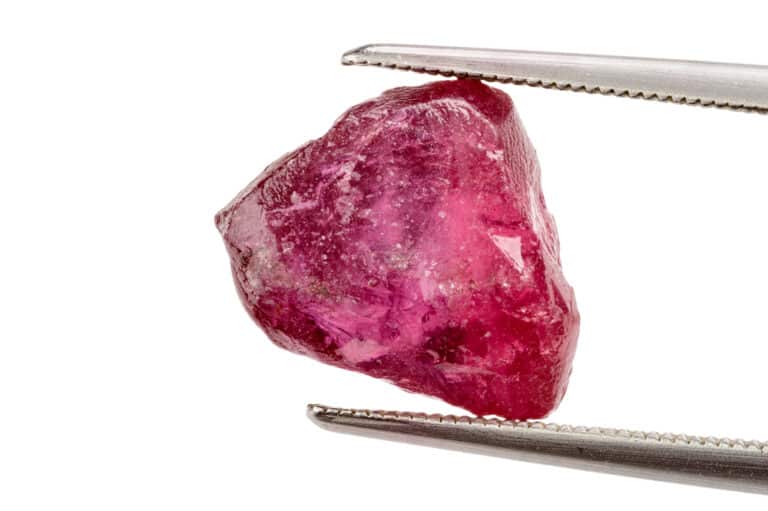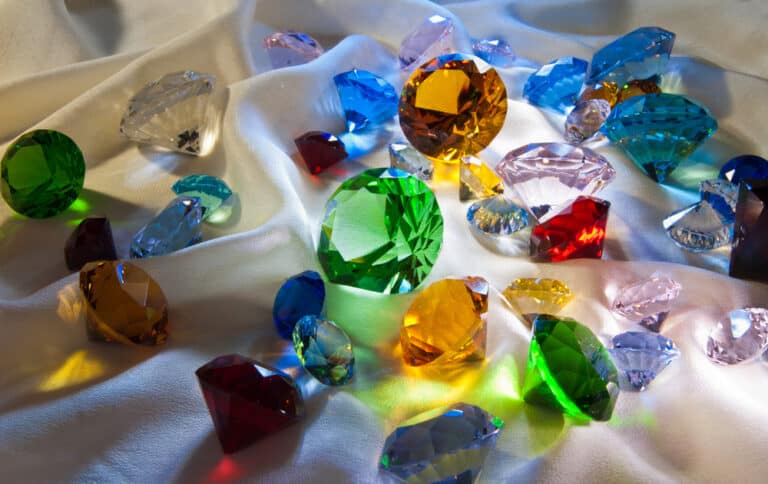People have traded in gemstones for nearly 6000 years, making them some of the world’s oldest commodities. Apart from their historical and cultural importance, gems like diamonds, sapphires, emeralds, and rubies have been seen as a form of wealth and a worthwhile investment. Are rubies still a worthwhile investment? Does a ruby have a resale value?
Rubies have excellent resale value and make a worthwhile investment if you have purchased high-quality stones with good provenance. Because they are rare, beautiful, and long-lasting, rubies appreciate in value and serve as a hedge against inflation.
While investing in gold is a traditional way of maintaining and increasing wealth, precious stones are also a valuable investment. Let’s examine whether rubies have a good resale value, the wisdom of investing in rubies, and what you should consider when buying these gorgeous red stones.
Do Rubies Have Resale Value?
A member of the corundum gemstone family, rubies have excellent resale value.
Rubies have been considered valuable investments for centuries as they are magnificent and hard-wearing. Royalty often included rubies in their crown jewels to be retained as a financial legacy for future generations.
Although less popular than sparkling diamonds, rubies are the gemstones that appreciate most in value. Rubies have a growth rate of 8 to 10% per annum, followed by sapphires and emeralds.
These red stones are not as liquid as gold and are not as easy to sell. Still, rubies are a reliable investment that retains value, with the additional advantages of being private, compact, and portable.
What Makes Rubies Valuable?
The following characteristics will determine a ruby’s value and resale value: rarity, market value, aesthetic value, and provenance.
Rarity
Any commodity that has a greater demand than supply will experience growth. The scarcity of supply drives value.
Rubies have always been a rare stone, as there are far fewer high-quality rubies available than other precious stones, especially diamonds.
As demand for rubies has grown over the past years, the yield of ruby mines is depleting, bringing fewer stones to market.
Market Value
The market value of rubies is the value traders or purchasers are willing to pay. Rubies are a tangible asset, meaning you can physically own one.
Rubies have a higher market or intrinsic value than diamonds as they are scarce. The market value of diamonds is carefully constructed as many more diamonds are available, just not released into the market.
These red gems also have a higher concentration of value than gold because they are not a volatile investment. Whatever happens in the financial sphere, be it an economic depression, a downturn in the stock market, or currency devaluation, the value of rubies continues to grow and return yields on investment.
There is often an increased demand for rubies during financial crises, as their value doesn’t change with the economic climate. Investing in rubies is, therefore, a hedge against inflation.
Unlike gold, rubies and other gemstones have no fixed value: there is no fixed dollar price per weight of rubies. Instead, the cost of rubies depends on the stones’ aesthetic value and origin.
Aesthetic Value
With their magnificent red color, rubies are some of the most beautiful and culturally and historically significant gemstones.
The value of rubies is primarily based on their appearance, with similar classifications to diamonds: color, clarity, cut, and carat. Additionally, rubies are valued by the treatment they have received.
Color
The most important aspect of a ruby’s desirability is its color.
The highest-quality rubies have a vivid red hue. Stones with lighter red-orange or dark purplish shades will not command the same prices.
Pinkish rubies are referred to as pink sapphires, as rubies and sapphires are the same stone with differing colors.
Clarity
Clarity and brilliance are also factors in a ruby’s value. The clearer and brighter a gemstone and the fewer inclusions or flaws, the more valuable it is.
Rubies generally have inclusions, with needle-like silk inclusions adding to the beauty of the ruby.
A transparent ruby would be extremely rare and the most costly.
Cut
The cut of a gemstone is crucial in that it enhances the clarity and brilliance of the stone and shows it to its best advantage.
The shape of the ruby will influence the cut and determine which is most suitable. The typical crystal form is hexagonal, so cut rubies are often oval or cushioned, with crowns or pavilions of concentric facets.
Rare, large rubies can accommodate round, triangular, marquise, pear, and emerald-cut shapes.
Carat
Rubies’ size and weight are described in carats, like diamonds. The larger the stone, the higher the carats, and the more valuable it will be.
Treatment
Most rubies are heat-treated to improve their color and brilliance. Low-temperature heat treatment is harmless, but exposing the stones to extremely high temperatures can affect the quality. Some gem dealers will also artificially color rubies to enhance their saturation.
Only experts can tell if a ruby has been treated, so always have stones appraised before you purchase them. Bargain-priced stones have likely been heat-treated.
Provenance
Where a ruby comes from will also determine how valuable it is.
Rubies from Myanmar (Burma) are considered the rarest and best quality. These stones are generally large, with a vivid red color known as “pigeon’s blood,” and are sold for between $400,000 and $1 million per carat. Only licensed buyers can purchase Burmese rubies.
Rubies from Sri Lanka, Kenya, Tanzania, Madagascar, and Mozambique are also sought-after and valuable. Still, they do not command the same prices as Burmese rubies, even if they are of similar quality.
Most commercially sold rubies in jewelry stores come from Vietnam and Thailand and are not of the same quality.
When buying a ruby, it is essential to have paperwork detailing the stone’s provenance.

How To Invest In Rubies
Investing in gemstones like rubies is wise because they retain rather than depreciate in value and serve as a hedge against inflation. Rubies are, therefore, often acquired as a long-term investment.
Here are some broad guidelines when considering investing in rubies:
- To buy and resell rubies, it is vital to go to a reliable and legitimate dealer. Your investment will be useless unless you can trade the stones effectively.
- Always have an in-person consultation in person to handle the stones yourself.
- The sales process must be completely transparent, with clear proof of the stone’s provenance.
- The seller must provide the appropriate gemological certification and be open to an external appraisal of the stones.
Conclusion
Buying ruby jewelry as an engagement, birthday, or anniversary gift or acquiring stones as a direct investment is a good choice as these gemstones have excellent resale value. Always purchase high-quality stones from a reliable dealer who can provide proof of provenance.
Resources
- https://budgeting.thenest.com/choose-investmentquality-rubies-21829.html
- https://cnaluxury.channelnewsasia.com/obsessions/eight-gemstones-that-will-increase-in-value-180266
- https://www.diamonds.pro/education/rubies/
- https://economictimes.indiatimes.com/money-you/moneys-just-throw-away/articleshow/
- https://www.forbes.com/sites/carolbesler/2016/03/11/the-big-three-why-ruby-sapphire-and-emerald-top-the-list-of-precious-gems/?sh=d20954048ba1
- https://www.gia.edu/ruby-quality-factor

